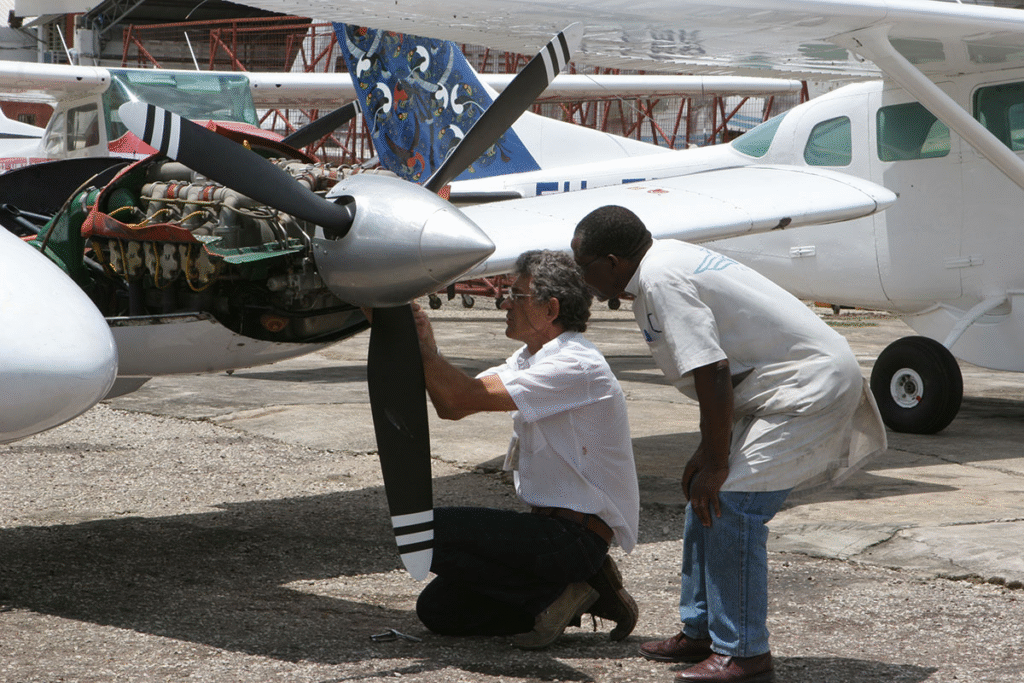Tanzania has embarked on a deliberate initiative to modernize its air force infrastructure—particularly maintenance and logistics capabilities—with assistance from the United Kingdom. Through collaborative training programs, facility refurbishments, and technical exchanges, Tanzania aims to build a more sustainable, reliable aviation support structure for its growing needs.

1. UK–Tanzania Memorandum of Understanding
In late 2021, the Tanzanian Ministry of Defence and the UK Ministry of Defence signed a Memorandum of Understanding (MoU) to build air force maintenance capacity. The agreement covers areas like maintenance training, equipment servicing protocols, and joint maintenance facility upgrades. UK defence contractors are slated to provide curriculum materials and on-site instructors at Tanzanian Air Force bases—particularly Mwanza and Ngerengere.
2. Mwanza Air Force Base Enhancements
At Mwanza Air Force Base on Lake Victoria, the UK-supported initiative has improved maintenance infrastructure by expanding aircraft hangars and adding modern workshops. As part of ongoing contracts, technicians are receiving UK-led training on aircraft avionics, hydraulic systems, and engine servicing—especially for transport and trainer aircraft. These upgrades aim to support both daily fleet maintenance and more complex depot-level repairs.
UK advisors have refurbished classrooms and simulation labs used to train Tanzanian maintenance officers in fault diagnostics, parts replacement, and standard operating procedures aligned with international norms.
3. Ngerengere Air Base Support Programs
Ngerengere Air Force Base, despite being built with earlier Chinese assistance, was included in the UK-supported upgrade plans. Improvements include updated tooling, logistic tracking systems, and expanded runway maintenance capabilities to better support larger transport and combat aircraft. British visiting teams assessed current capabilities and began transferring standardized maintenance practices to Tanzanian staff.

4. Technical Training and Capacity Building
Tanzania’s air force personnel now undergo UK-led maintenance courses covering everything from avionics troubleshooting and engine overhaul to composite airframe repair. These structured programs—frequently hosted at training facilities in Mwanza and Ngerengere—combine classroom instruction with hands-on practice supported by British advisors.
By mid‑2024, nearly 200 Tanzanian technicians and engineers had completed advanced modules in maintenance planning, accident prevention, and aviation quality assurance standards—significantly reducing reliance on foreign technical support and streamlining turn‑around times.
5. Building Indigenous Supply Chains
A key objective has been transforming Tanzania’s ability to source and stock maintenance components independently. UK mentors helped introduce supply chain management tools and standardized sourcing protocols adapted from UK Ministry of Defence practices. These reforms target improved parts accountability and reduced downtime due to spare shortages.
6. Regional Interoperability Focus
As part of broader East African and EAC integration efforts, Tanzanian facilities have been positioned to serve as maintenance hubs supporting joint aviation assets during regional exercises such as Justified Accord (JA25) in 2025—where Tanzania co-hosted with Kenya, Djibouti, UK and US forces. These upgrades provide mutual benefits in shared logistical readiness and technical interoperability.
7. Broader Defense Reform Context
The air maintenance effort aligns with a wider push to professionalize the Tanzania People’s Defence Force (TPDF). Reforms aim to elevate the Air Force (TPAF) into a distinct command and improve institutional professionalism. The maintenance projects contribute by embedding standardized practices, improving technical literacy, and strengthening civil–military cooperation in air logistics.
8. Key Outcomes Through 2025
Facility upgrades: Hangars, workshops, and maintenance infrastructure at Mwanza and Ngerengere were significantly expanded and modernized.
Workforce capacity: Hundreds of Tanzanian technicians and engineers trained under UK instructors in maintenance, avionics, and airworthiness standards.
Logistics systems: New inventory control and parts procurement systems introduced, reducing aircraft downtime.
Operational readiness: Faster turnaround for tactical and transport aircraft boosted mission support across Tanzania and regional peacekeeping contributions.
Regional synergy: Tanzania’s bases support multinational aviation exercises, improving interoperability with UK, US, Kenyan, and Djiboutian air forces.
9. Challenges and Future Directions
Despite progress, funding constraints and bureaucratic hurdles remain. The Tanzanian Air Force still lacks a fully independent depot-level overhaul facility, and some upgrades rely on continued donor support. There is ongoing effort to ensure local civil-servant systems support aviation logistics sustainably. The transfer of UK technical knowledge into long-term institutional procedures remains a focus area.
In the future, Tanzania aims to expand these capabilities further, potentially establishing regional air maintenance support services for East African deployment cycles in disaster relief, humanitarian logistics, and joint African Union missions.


